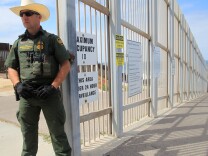
-
Listen Listen

Megan Garvey
What I cover
As Editor-in-Chief of LAist, I lead a nonprofit newsroom of reporters who share the goal of centering coverage of Southern California around what you tell us you need to know to fully participate in — and to enjoy — life in Southern California.
My background
At LAist, I've managed a significant transformation in our coverage and strategy, which has been reflected in large gains in audiences. Before that, at the L.A. Times I played a key role in pushing the newsroom into digital storytelling. I'm known for working hard to establish and foster a creative environment. I'm proud of my track record of supporting talented, versatile journalists whose work stands out in a crowded media field.
My goals
For LAist to persevere and thrive, our journalism must be original, distinctive, meaningful and, importantly, helpful in ways that moves our audiences to support the work with donations and by spreading the word.
How to contact me
You can reach out by email, at mgarvey@laist.com.
Stories by Megan Garvey
-
The flight is latest in a project to capture data on air quality and sources of pollution.
-
The ticket was drawn Wednesday night.
-
We're asking everyone who values LAist as a free source of news and information to contribute what they are able. In our final day of a critical fundraiser, we still have more than $200K to raise.
-
As journalists come under attack, we explain why and how we do our jobs in the KPCC newsroom.
-
You deserve great local news — and we need your help to find those stories. We’re inviting you to be part of the conversation.
-
The loss will be felt deeply in the city of Los Angeles and by food lovers everywhere. Gold, a Los Angeles native, had just recently been diagnosed with pancreatic cancer.
-
Some of the newest U.S. citizens took the oath of allegiance Wednesday in Pasadena.
-
U.S. immigration officials will start using 1,600 federal prison beds to detain immigrants, the majority of them at a facility in Lancaster. The move, first reported by Reuters, marks the first wide-scale use of federal prisons to hold immigration detainees.









